Best Cheap Bass Guitar - Top Choices for Under $300

Author & Contributors
Alexander Briones
I have been writing about and researching music gear for many years, all while serving as a music director at my local church. I engage in guitar playing and singer-songwriter stints, in addition to mentoring young musicians and teaching guitar and bass.
Squier Mini Precision Bass (Short Scale)
Cons
- Need to replace factory installed strings to better appreciate its tone and playability
- Not suitable for those who prefer a full-size P-bass
Pros
- Kid-friendly compact body size
- Smooth neck feel for easy transitions between different positions on the neck
- Relaxed string tension because of its shorter scale length
- Beats others in the same price range with its balance of easy playability and value for money
- Good build quality
- Great for old school music styles like blues, pop, R&B, funk and more
When you think of bass, you probably have an image of the Fender Precision bass in mind. It continues to be popular, and remains to be one of the most cloned instruments in the market today.
The Squier Mini Precision is an affordable and miniaturized version of the iconic Precision bass (also called P-bass), giving you the same look and feel, but with less of the bulk and weight.
The body is crafted from poplar, but it is around 3 quarters the size of a regular P-bass, which makes for a more comfortable instrument, while retaining the familiar P-bass shape and sound.
This lighter and compact configuration makes it ideal not only for young musicians, but also for those who want an easy-to-play beater bass.
It has a maple neck with laurel or maple fingerboard, depending on the color, and it has satin finish applied on the neck. This, together with its short scale length, result in a smoother and relaxed playing feel that's better than other cheap basses.
Finally it comes with the iconic split-singlecoil pickup, which gives it the familiar P-bass style tones that works great in blues, R&B, pop, funk and other styles of music.
The Squier Mini Precision Bass is a great bass for young players, and will also be a great addition for those who want a comfortable beater bass to play around at home.
Squier has more options for those who can extend their budgets, including the popular Squier Classic Vibe 60s Precision bass.
Specifications
- Body: Poplar
- Neck: Maple (Bolt-on)
- Neck Profile: C
- Fingerboard: Laurel
- Scale Length: 28.6"
- Nut Width: 1.5"
- Fingerboard Radius: 9.5"
- Frets: 20 Narrow Tall
- Bridge Pickup: Precision Split Single-coil
- Controls: Volume 1, Tone
- Bridge: 4-Saddle Vintage Style
- Weight: 10 lbs.
| Website | Source | *Rating Value |
| Rob C Music | Rob C | 96/100 |
Ibanez Gio GSR100EX
Cons
- Fretwork is not as polished as more expensive models
- Limited tone options with its single humbucker configuration
Pros
- Fast and smooth slim profile neck as expected from Ibanez
- Comfortable and nice looking contoured body
- Good build quality and playability at a very affordable price point
- Simple single-humbucker configuration with beefy low-end
- Suitable for various styles of music, especially pop and rock
When it comes to non-traditional bass guitars, it's hard to overlook the popularity of the Ibanez Soundgear series. I have personally seen many of them used on stages and events and have been played alongside some bassists who swear by them.
The GSR100EX is part of this series, sporting the same contoured body and fast playing feel, but with streamlined hardware, and more importantly, at a more accessible price.
To meet Ibanez' standards for fast playing feel, the GSR100EX comes with a slim profile maple neck with flat radius fingerboard. This is complimented by its distinct body shape, with a cutaway that allows for easy access to upper frets.
While many Soundgear basses come with extensive controls, this one comes with a basic single-humbucker configuration, with knobs for adjusting volume and tone. And this simplicity reduces tweaking distractions, especially for novices who need to focus more on playing and building up their chops.
Also, the humbucker pickup is voiced to provide a beefy low-end, that'll fit many contemporary styles of music.
The Ibanez Gio GSR100EX is a good no-frills starter bass, and is one of the best budget bass guitars for fans of contemporary and modern music.
Specifications
- Body: Poplar
- Neck: Maple (Bolt-on)
- Neck Profile: SR (Slim)
- Fingerboard: Jatoba
- Scale Length: 34"
- Nut Width: 1.614"
- Fingerboard Radius: 12"
- Frets: 22 Medium
- Bridge Pickup: Standard PPD4 Humbucker
- Controls: Volume, Tone
- Bridge: B10
- Weight: 8 lbs.
| Website | Source | *Rating Value |
| Talk Bass Forum | pcake | 90/100 |
Fender Squier Bronco Bass (Short Scale)
Cons
- May be a little too trebly for those who prefer beefy thump tones
- Fretwork can be hit or miss, but mostly hit given the high ratings it receives
- Not for those who prefer conventional / old school style bass guitars
Pros
- Trebly P-bass style tone courtesy of its single-coil pickup
- Easy to play, store and carry around, thanks to its light and compact body
- Slacker playing feel thanks to its shorter scale length
- No frills design and controls
- Works nicely with various musical styles, especially funk, blues and R&B
The Fender Squier Bronco is an interesting entry in this guide because it is a bass that comes with a single-coil pickup meant for guitars.
While it doesn't explicitly say this in its marketing specs, opening up the pickguard of the Bronco will show a regular 6-pole single coil pickup that is commonly found in Strats.
Interestingly, this did not turn off bassists, rather many actually love its vintage style trebly tone. Some have even used it as base for modifications, which including swapping out the 6-pole ceramic pickup with a rail pickup, resulting in tone and response improvement.
Matching its unique pickup configuration is a distinct looking body shape, which is made to be thinner and lighter than the average bass.
It also has a 30" short scale length neck, which results in slacker string feel that's ideal for beginners. This relaxed playing feel also makes it ideal for guitarists who occasionally plays bass, in addition to bassists who just want an instrument that's easier to work with.
Rounding off its features are basic hardware that include a 2-saddle bridge and sealed die-cast tuners.
Note that current Bronco releases now come with a poplar wood body, as opposed to agathis wood which is what the previous version had.
Those who prefer vintage style trebly bass tones over those with heavy low-end, this is for you. This is also a good starter and beater instrument for those who want the slacker feel of short-scale basses.
Specifications
- Body: Poplar
- Neck: Maple (Bolt-on)
- Neck Profile: C-Shape
- Fingerboard: Laurel
- Scale Length: 30"
- Nut Width: 1.5"
- Fingerboard Radius: 9.5"
- Frets: 19 Medium Jumbo
- Bridge Pickup: Special Design Single-Coil Pickup
- Controls: Volume, Tone
- Bridge: 2-Saddle Bridge
- Weight: 11.02 lbs.
| Website | Source | *Rating Value |
| Bass Guitar Shack | Robert | 96/100 |
| Sharpen My Axe | Alex Richards | 95/100 |
Ibanez TMB30 (Short Scale)
Cons
- The action can be too low for those who play aggressively, thankfully this can be remedied by raising the saddle
- May require string set-up adjustments out-of-the-box, especially if you already have your preferred playing feel
- Not for those who prefer old school bass designs
Pros
- The TMB30 gives you the most weight savings of the basses in this guide
- Light weight and short-scale length makes it easy to play
- Good punchy tone with two pickup switching
- Stylish look that'll easily standout amidst conventional designs
- Given its two pickup configuration and Ibanez quality build, you're getting more than what other budget basses offer
The TMB30 is an offset body bass guitar that features the Ibanez Talman shape, a stylish and lightweight design with good cutaway access for the upper frets.
It comes with a short 30" scale length fingerboard that seem to fit the overall look of the instrument better, and more importantly, results in less string tension. This different playing feel and distinct appearance results in a nice change of pace for those who are used to traditional bass guitars.
Ibanez equipped the TMB30 with a two pickup P/J configuration, with the bridge pickup being a singlecoil Jazz bass style pickup, while the middle position is a split singlecoil Precision style pickup. This pickup combination provides better sonic versatility compared to the usual single pickup setup seen in this price range.
Note that this one does not have the usual flat radius profile expected from Ibanez, rather it has a rounder 9.4" radius fingerboard.
With its combination of playability and visual flair, the Ibanez TMB30 is well worth getting as your first bass guitar, or as your secondary short-scale instrument.
Specifications
- Body: Poplar
- Neck: Maple (Bolt-on)
- Neck Profile: TMB4
- Fingerboard: Jatoba
- Scale Length: 30"
- Nut Width: 1.614"
- Fingerboard Radius: 9.45"
- Frets: 20 Medium
- Bridge Pickup: Precision Split Single-coil Neck, Jazz Bass Singlecoil Bridge.
- Controls: 2 x Volume 1, Tone
- Bridge: Standard Bridge
- Weight: 7.93 lbs.
| Website | Source | *Rating Value |
| Talk Bass Forum | Maxdusty | 94/100 |
Yamaha TRBX174
Cons
- Initial string and action setup may be needed for experienced players
- Not for those who prefer old school looks and playability
Pros
- Lives up to Yamaha's student-friendly reputation in terms of playability and value for money
- Solid and reliable neck that can handle hybrid string gauges for alternate tuning
- Versatile tone options, thanks to its P/J pickup configuration
- 24-fret with cutaway access
- Sports a stylish and functional modern look
The Yamaha TRBX174 combines classic P/J pickup configuration with modern looks, and it does all this while maintaining student-friendly price and playability.
It has a distinct double-cutaway mahogany body that gives it an aggressive modern look. But it's not just about looks because it provides ample upper fret access, which is important given that it has a long 24-fret fingerboard.
While 24 frets maybe overkill to some, it is a common feature among those who play modern music styles. Underneath its 10" radius rosewood fretboard is a 5-piece maple/mahogany neck that's designed to be sturdy enough to handle heavy hybrid string sets that are used in alternate tunings. The neck also has a student-friendly comfortable feel, as expected from a Yamaha branded instrument.
The P/J (Precision Split Coil + Jazz Bass pickups) configuration is a hit among bassists who like to easily change tones right on their instrument. It has reasonably good tones for whatever playing style you're into, be it pop, R&B, classic rock, and more. It comes with dedicated volume knobs and a single tone knob. These features are quite impressive, compared to the uber basic ones that you get from other affordable bass guitars.
It's hard to go wrong with this solid bass from Yamaha. It's a great bass if you're looking for a student friendly instrument.
Specifications
- Body: Mahogany
- Neck: Maple (Bolt-on)
- Neck Profile: C
- Fingerboard: Rosewood
- Scale Length: 34"
- Nut Width: 1.57"
- Fingerboard Radius: 9.5"
- Frets: 24
- Pickups: Precision Split Single-coil Neck, Jazz Bass Singlecoil Bridge
- Controls: 2 x Volume, 1 x Tone
- Bridge: Vintage Style
- Weight: 11.29 lbs.
| Website | Source | *Rating Value |
| Recording Chat | 95/100 |
Ibanez TMB100
Cons
- The need to worry about battery life, back-up and replacement can be a bother to some
- Not for those who want a traditional looking bass
Pros
- Offers more tone options with its Active EQ and P/J dual pickups
- Solid build quality that translates to smooth playability
- Standout retro offset body that's also comfortable to use
- Intuitive and well thought out control layout
- Great value for money for those who want a full-scale bass
Here's the reality, most bass guitars in this price range probably share similar components, but Ibanez went above and beyond the usual with the TMB-100.
For something very affordable the TMB-100 gives you a nice looking full size 34" scale bass with dual P/J configuration pickups, and active 2-band EQ. "Active" EQ means that the Treble and Bass EQ knobs are powered by a 9V battery which is inserted via a back compartment.
Passive EQs are limited to just cutting and reducing the signal, while "active" EQ can boost the signal, this can be used to substantially emphasize treble and bass frequencies to taste. Together with its two pickup configuration and blend knob, this allows for a wide range of tones that can fit many different musical styles.
Unfortunately, the battery compartment led some to believe that this bass has active pickups, but it is only the EQ that is active.
Controls are implemented in a brilliant way, by designing each of the two knobs to have two rotary controls wrapped around them. This way you only see two knobs but you are actually control 2 parameters per knob, a master volume knob, and balance (blend of the two pickups), and another for treble and bass active EQ.
All these electronics are mounted on its lightweight and easy to distinguish retro offset body, which to my eyes look like a cross between a Sting Ray and a Mustang. This body is paired with a 20-fret fingerboard that meets the smooth playability standards of Ibanez.
If you are looking for an affordable bass guitar with a different appeal, then check out the Ibanez TMB100.
Specifications
- Body: Poplar
- Neck: Maple (Bolt-on)
- Neck Profile: TMB4
- Fingerboard: Jatoba
- Scale Length: 34"
- Nut Width: 1.614"
- Fingerboard Radius: 9.45"
- Frets: 20 Medium
- Neck Pickup: Dynamix P Split-coil
- Bridge Pickup: Dynamix J Single-coil
- Controls: 1 x Volume/Balancer, 1 x Active Treble/Bass Boost/Cut
- Bridge: B10
- Weight: 8.6 lbs.
| Website | Source | *Rating Value |
| Music Radar | Mike Brooks | 90/100 |
Gretsch G2220 Junior Jet II (Short Scale)
Cons
- Some may not like its "D" profile neck shape
- Its compact size can feel awkward to those who are used to bigger bass guitars
Pros
- Student friendly short-scale and compact body
- Versatile vintage style tone thanks to its dual single coil pickups
- Aesthetically appealing thanks to good design and craftsmanship
- Good build quality and playing feel
- Guitar-like shape makes it viable for guitarists and multi-instrumentalists who only occasionally play bass
The Gretsch G2220 Junior Jet Bass II is a short-scale bass guitar, with 30.3" scale length, ideal for younger students of the instrument and for those who want a small bass that's easier to play.
The neck is crafted from maple, topped by a 12" radius rosewood fingerboard that's meant to be flat and easy to play for beginners.
This short-scale neck, together with its familiar guitar-shaped single-cutaway "Jet" profile body, also make it a favorite among guitarists who play bass from time to time. This allows them to play bass parts with minimal adjustments be it on stage or for home recordings.
Another distinct feature is its two "mini-humbucker" looking pickups, which are actually single-coil pickups. These gives it vintage style tones that complement the slacker sound of its strings. Having two pickups expands the sounds that you can get, which you can use to make it sound more divergent from the usual bass tones.
All these distinct features make it a good 2nd bass to buy for those who want to expand their tone and playing options. For a budget bass guitar, the G2220 II Junior Jet is quite the looker, as expected from Gretsch instruments.
While it does look and sound different, everything else is straightforward, from the hardware down to controls, which include volume, tone control, and pickup selector.
If you're looking for a nice looking short scale bass to add to your tool kit, then check out the Gretsch G2220 II Junior Jet.
Specifications
- Body: Basswood
- Neck: Maple
- Fingerboard: Rosewood
- Scale Length: 30.3"
- Nut Width: 1.563"
- Fingerboard Radius: 12"
- Frets: 20 Medium Jumbo
- Middle Pickup: Mini-Humbucker
- Bridge Pickup: Mini-Humbucker
- Controls: Master Tone, Master Volume, Pickup Selector
- Bridge: Standard 4-saddle Bridge
- Tuners: Chrome Die-cast Tuning Machines
- Weight: 8.375 lbs.
| Website | Source | *Rating Value |
| Music Radar | Mike Brooks | 90/100 |
Things to Consider When Buying a Cheap Bass Guitar
-
First off, bass guitars are notorious for being hefty and heavy, so it is important to set your expectation, especially if you're getting one for a child. Even affordable basses tend to be on the heavy side. This is where body profile, size and curvature helps, the general idea is to get one that will be reasonably comfortable.
But it's not just about being comfortable, having a bass guitar that appeals to the eyes can spell the difference between forced and inspired practice. So it is important to get the look that you, or your child prefer - right at the start. If you're not sure which style to go for, the safest route is to get one that looks like the bass guitar of you or your student's favorite bassists.
-
There are multiple factors that dictate playability for bass guitars, one of which is Scale Length, it is basically the distance that your strings are stretched out, and as such it indicates the tension of the strings. The most common scale length for bass is 34", because it has just the right balance of tension and tone. Other basses can have a scale length that is as short as 30" or a little less, which significantly reduces string tension, ideal for young players or for those who want an instrument that's smaller and easier to play.
Fingerboard Radius, which indicates the curvature or flatness of the fingerboard, is an important playability specification that you should look at. Although the fret board may look basically flat at first glance most of them are actually curved outwards. Higher radius fingerboards are closer to being flat. Ibanez is known for their 12" fingerboard radius which is one of the flattest, while traditional bases have a lower radius that results in more curve. Flatter 12” and up fingerboards are ideal for beginners and younger players. The Nut Width tells you how far apart the strings are spaced, the narrower the nut width is, the easier it is for smaller hands to reach each string. The Neck Profile describes the shape of the back of the neck, the thinner and flatter, the easier it is to play, but there are some who prefer fatter necks for better grip. A bass guitar with a good cutaway at the neck joint allows for easier access to the upper frets.
String Action refers to the height of strings above the fretboard. It's a specification that's not always directly given by the manufacturer because it can vary for each instrument. Beginners will want those with low action, but not too low to avoid "fret buzz", which means that the vibration of your string is hitting the frets. Some buyers report "fret buzz" in new bass guitars and although this can be annoying it can be fixed by raising the action (adjusting the strings to be higher off the fretboard). There are those who prefer slightly raised action for better intonation control of each note as you press the strings, and better overall string resonance as well. Which ever string action you prefer, you have to know how to tune a bass guitar. Another important factor for string action is Bass String Gauges.
-
Being an electric instrument, bass pickups dictate most of the instrument's resulting sound. And as expected in this price range, what you're getting are affordable reproductions of pickups found in the best bass guitars. Single Coil pickups are the most common, because of their crisp and detailed sound which reproduces classic bass tones as heard on countless tracks from the past. Split-Single Coil pickups are often labelled as "P" style pickups since they were first used in Fender's Precision bass. The other popular pickup type is called the "J" style, which follows the Fender Jazz Bass pickup design. They have two magnetic poles assigned per string. Humbuckers generally sound warmer and fatter, and are widely used for modern rock and metal. If you don't have experience or a particular preference yet, then again just go for the pickup configuration used by your favorite bassists.
Most of the basses in this price range have Passive pickups and electronics, which means they do not require a battery and have limited tone shaping options. Those with Active pickups and electronics allow for more tone shaping but require a 9V battery to properly function.
-
It goes without saying that the bass guitars we feature here are not stand alone, they require at least a 1/4" cable and a bass amp to get their sound out - so if you want to be able to use your bass, you'll need to have at least these two items ready. There is also other gear that you can plug your bass guitar into, gear that can apply effects, improve your sound, and amplify your sound. These include bass pedals, bass preamps, PA Systems, audio interfaces and more.
Body Shape, Finish and Weight
Playability
Bass Pickups
Bass Amps, Cables and Other Gear
Cheap Bass Guitar Selection Methodology
The first Edition was published in 2016.
We looked at highly rated bass guitars in the sub $300 that meet these criteria: have standard 4-string setup, have fretted fingerboards, come with magnetic pickups, and are readily available at major gear retailers in the USA.
17 bass guitars met our criteria and were placed on our short-list for closer examination.
We gathered the most recent reviews, ratings, recommendations, and discussions about the basses that met our criteria. The data we gathered came from over 9,700 sources, all of which were then processed using our Gearank Algorithm to produce a rating score out of 100 for each one. We then used these scores to select the highest rated ones to recommend. For more information about our methods please read How Gearank Works.
About the Author and Contributors
Here are the key people and sources involved in this guide's production - click on linked names for information about their music industry backgrounds.
Lead Author & Researcher
Alexander Briones
I have been writing about and researching music gear for many years, all while serving as a music director at my local church. I engage in guitar playing and singer-songwriter stints, in addition to mentoring young musicians and teaching guitar and bass.
As a music director, I have to learn, play and teach bass parts to our team of musicians. And while I mainly play guitar, I've enjoyed playing bass on many occasions, usually to sub when the bass guitarist is absent. My favorite bass is a decades old P-bass clone from the '70s, called the Yamaha Pulser PB-400. It has been used by generations of musicians at our church and it still plays and sound great. I also enjoy playing my brother's 5-string Yamaha TRBX 305, which is a big departure to a traditional 4-string P-bass.
Contributors
Jason Horton: Editing and Illustrating.
Media
Main/Top Image: Produced by Gearank.com using a photograph by Roman Voloshyn / Shutterstock.
The videos have been embedded in accordance with YouTube's Terms of Service.
The individual product images were sourced from websites, promotional materials or supporting documentation provided by their respective manufacturers.







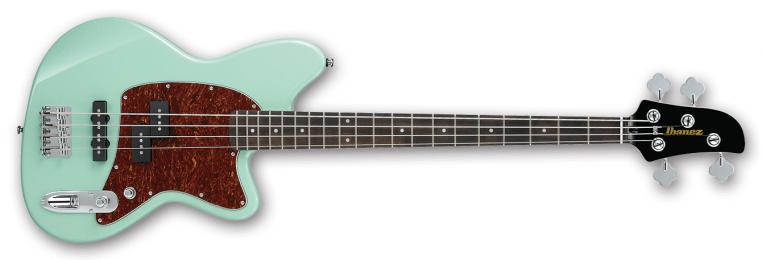

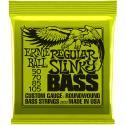
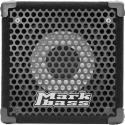

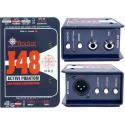
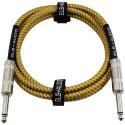

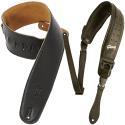
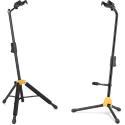
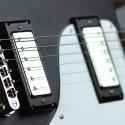

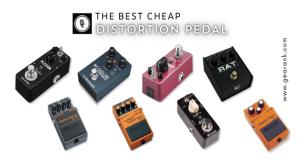

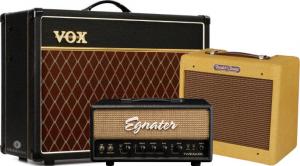
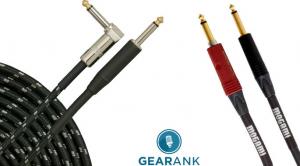
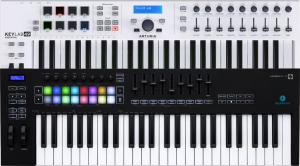
Comments
The following basses were
Submitted by Jason Horton on
The following basses were removed from the recommended list above when we published our May 2022 Edition because they're no longer available or have been out-ranked by other options above:
We've had to remove the
Submitted by Jason Horton on
We've had to remove the Yamaha BB234 from the recommended list above due to a price increase.
Publication of our June 2021
Submitted by Jason Horton on
Publication of our June 2021 Edition resulted in the following basses coming off the recommended list above, but you can still see our analysis of them:
The following bass guitar
Submitted by Jason Horton on
The following bass guitar came off our recommended list today due to a lack of availability, but you can still read our analysis of it: Squier Vintage Modified Precision Bass PJ.
As a result of the February
Submitted by Jason Horton on
As a result of the February 2019 update the following basses were removed from our recommended list above - but you can still read our analysis of them:
The following bass has been
Submitted by Jason Horton on
The following bass has been removed from our recommended list due to a lack of availability: Sterling by Music Man S.U.B. Ray4.
So the editor's pick of the
Submitted by Marc (not verified) on
So the editor's pick of the best sub<$300 bass is the bass listed for $400. Fantastic journalistic practices. That's one way to completely ruin an otherwise very good and highly useful comparison review.
The "Editor's Pick" is an
Submitted by Jason Horton on
The "Editor's Pick" is an item which we described as "This is where we sometimes present additional options which didn't quite fit into our list above but which you may also find interesting and useful."
But I can see how people would be confused if they didn't read that, so I've changed the title of the section to "Additional Option".
Your demo video on the Toby
Submitted by Jim Brewster (not verified) on
Your demo video on the Toby is almost useless, I play bass, not guitar, and your demonstrater seems more interested in pretending he's playing a guitar. That doesn't help me, if I want to sound like a guitarist, I'll plug in a Les Paul.
Watch the entire video...
Submitted by Garegh62 (not verified) on
Watch the entire video... Geezuz
If you watch the video all
Submitted by Jason Horton on
If you watch the video all the way through you'll see that he demonstrates traditional styles as well as the style of play you didn't like - the main thing is that it does demonstrate the different tones you can get from the Epiphone Toby Deluxe IV.